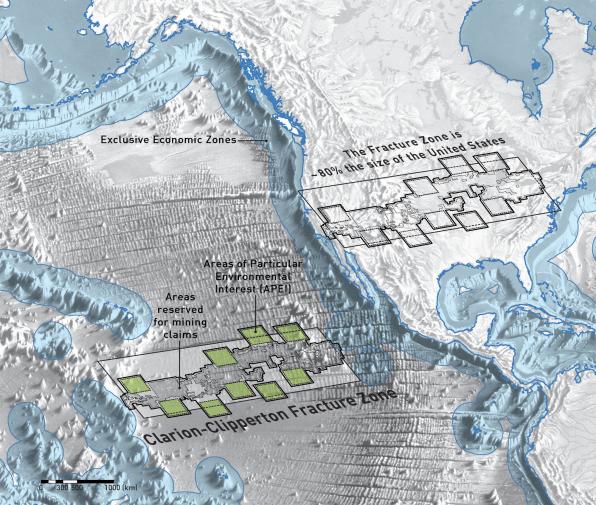Science Magazine — “Managing Mining of the Deep Seabed”
Studio Gang collaborated with the
Center for Ocean Solutions to visualize GIS data and other complex information in a clear, easily understandable image, for publication in the July 2015 issue of Science magazine.
The resulting image (below) shows the vast extent of mining exploration claims and areas reserved for mining in the Clarion-Clipperton Fracture Zone in the abyssal Pacific Ocean.
“The challenge ahead is to find ways to permit initial exploration, and ultimately commercial exploitation, of seabed minerals while sustaining the ecosystems that surround them.”
—Lisa Wedding, et al.
As the Center for Ocean Solutions’ Lisa Wedding, et al., explains, “Interest in mining the deep seabed is not new; however, recent technological advances and increasing global demand for metals and rare-earth elements may make it economically viable in the near future.” Contracts are being granted, but protections are lagging.
“Since 2001, the International Seabed Authority (ISA) has granted 26 contracts (18 in the last 4 years) to explore for minerals on the deep seabed, encompassing ~1 million square kilometers in the Pacific, Atlantic, and Indian Oceans in areas beyond national jurisdiction. However, as fragile habitat structures and extremely slow recovery rates leave diverse deep-sea communities vulnerable to physical disturbances such as those caused by mining, the current regulatory framework could be improved.” The article offers several recommendations in support of a precautionary approach to deep seabed mining.
The science of establishing MPA [marine protected areas] networks and minimizing human impacts is relatively new for deep-sea mining. However, given the uncertainty in the spatial and temporal scales and the intensity of mining impacts, combined with high biodiversity and extremely slow recovery rates of many communities and habitats in the deep sea, a precautionary approach using MPAs is warranted. As deep-sea protected areas are implemented, research will be necessary to evaluate their efficacy and to adaptively manage these networks as new science emerges regarding the intensity and scale of mining disturbance.”

